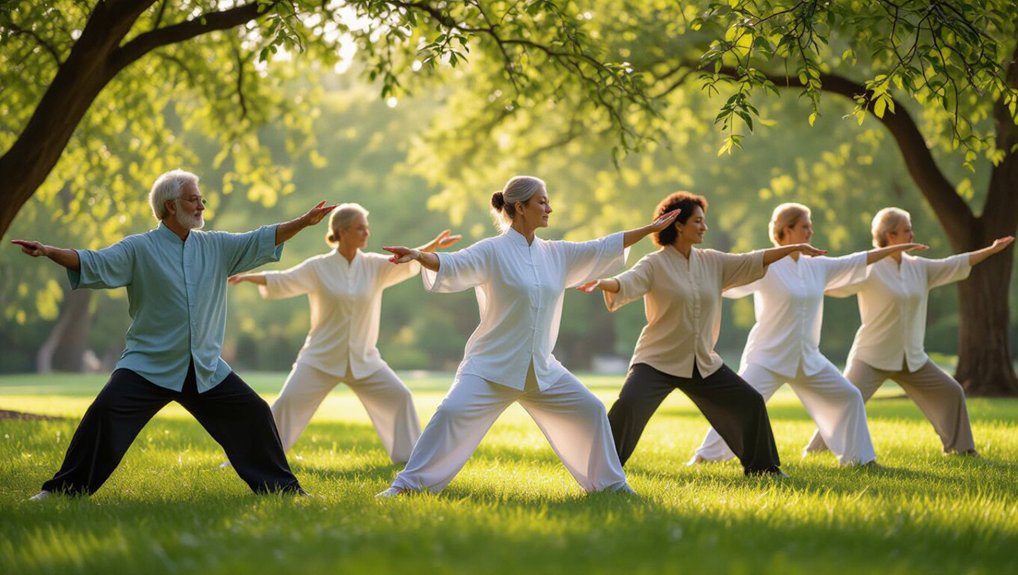You’ve probably watched Tai Chi practitioners in parks and wondered how those slow, graceful movements could possibly benefit your health. The truth is, these ancient exercises can transform your physical and mental well-being in ways you haven’t considered. Starting on July 17th gives you the perfect opportunity to establish a consistent practice, but there’s a specific sequence of foundational moves that’ll determine whether you’ll stick with it or give up within weeks.
Understanding the Core Principles of Tai Chi
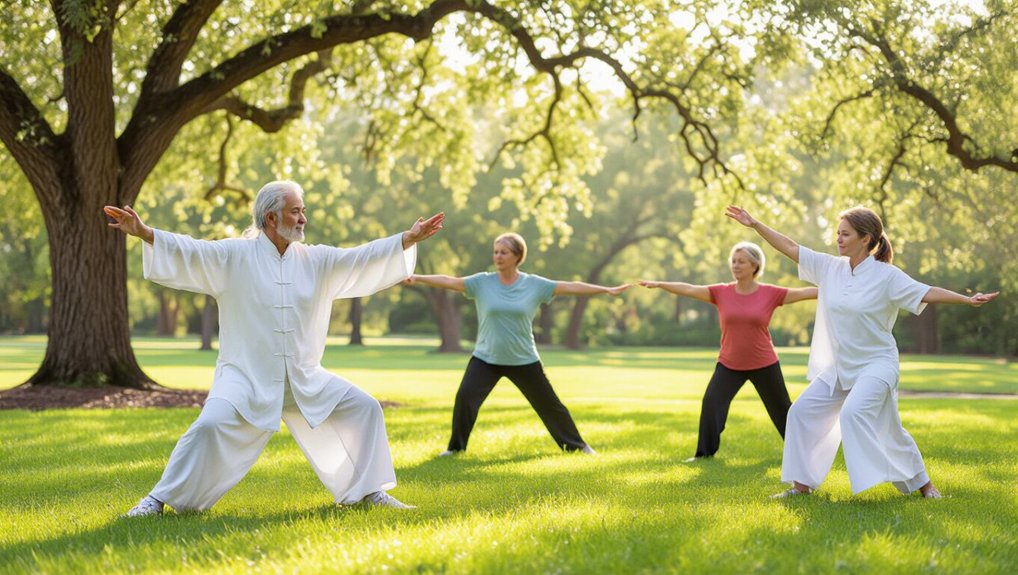
Balance forms the foundation of every Tai Chi movement, requiring you to maintain stability while flowing gracefully from one posture to another.
You’ll discover that breathing connects your mind and body, creating the internal energy called “qi” that powers each motion. Focus on slow, deliberate movements rather than rushing through sequences. Your spine should remain straight while your shoulders stay relaxed and lowered.
Mindfulness anchors every principle in Tai Chi. You’ll need to concentrate fully on each gesture, feeling how your weight shifts and muscles engage. This mental awareness transforms simple movements into meditation in motion.
Start by practicing these fundamentals daily for just ten minutes. You’ll gradually build the coordination and inner calm that make Tai Chi both accessible and profoundly beneficial for beginners.
Essential Breathing Techniques for Beginners
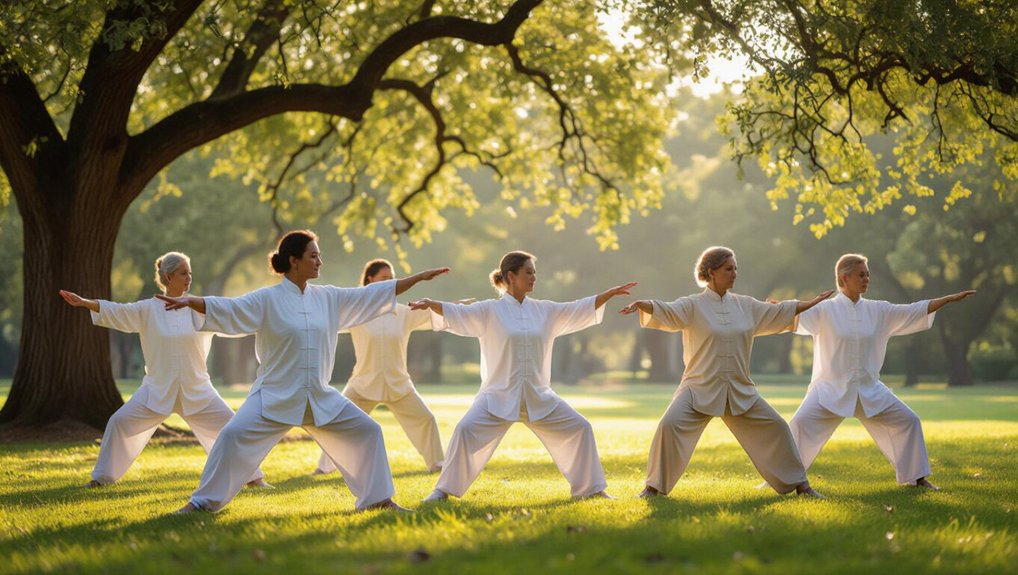
Proper breathing techniques will amplify everything you’ve learned about Tai Chi’s core principles, transforming your practice from simple movement into true energy cultivation.
You’ll breathe naturally through your nose, keeping your mouth closed throughout each session. Focus on deep, slow abdominal breathing rather than shallow chest breathing. Place one hand on your chest and another on your belly—you’ll want the lower hand to move more than the upper one.
Coordinate your breath with your movements. Inhale when you’re opening, lifting, or expanding your body. Exhale during closing, lowering, or contracting motions. Don’t force the rhythm; let it develop organically as you practice.
Start with simple counting—inhale for four counts, exhale for six. This foundational breathing pattern will support every Tai Chi movement you’ll learn.
Basic Standing Posture and Body Alignment
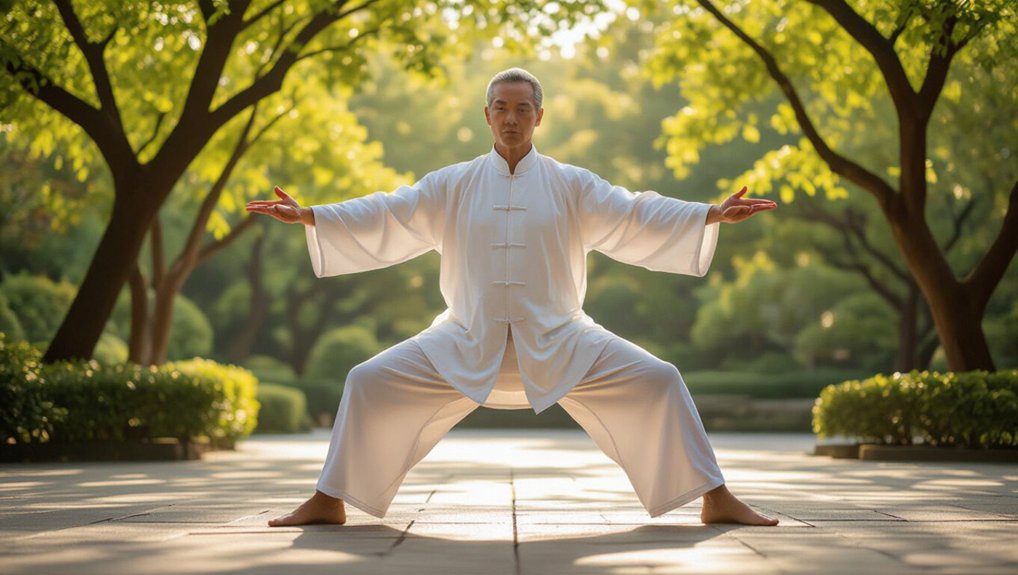
Before you move a single muscle in Tai Chi, you’ll establish your foundation through correct standing posture—the root from which all graceful movements flow.
Stand with feet shoulder-width apart, toes pointing forward. Distribute your weight evenly between both feet, feeling grounded yet relaxed.
Soften your knees slightly—they shouldn’t lock straight. Tuck your tailbone gently under while lengthening your spine upward. Imagine a string pulling the crown of your head toward the ceiling.
Drop your shoulders away from your ears and let your arms hang naturally at your sides. Keep your chin parallel to the ground and relax your jaw. Breathe deeply into your lower abdomen.
This Wu Chi stance creates stability, balance, and energy flow throughout your body, preparing you for seamless Tai Chi movements.
Five Fundamental Tai Chi Movements to Master
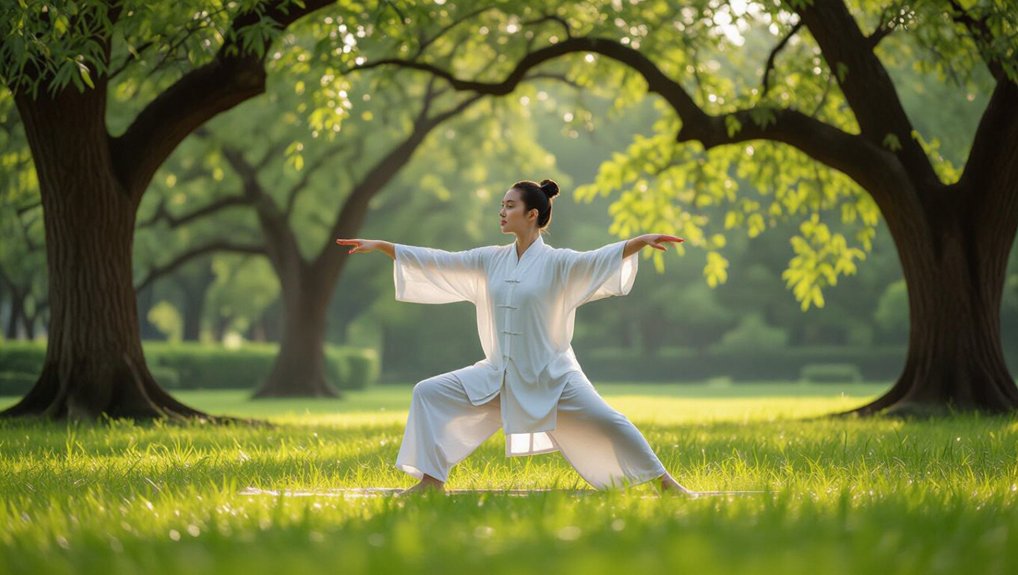
Once you’ve mastered the Wu Chi stance, you’re ready to learn the five core movements that form Tai Chi’s foundation.
These movements’ll build your coordination and internal energy flow.
Wave Hands Like Clouds involves shifting weight side-to-side while your arms move in circular patterns.
Keep your torso centered and step slowly.
Raise the Arms means lifting both arms to shoulder height, then lowering them with control.
Focus on smooth, continuous motion.
Part the Wild Horse’s Mane combines stepping forward with arm separation.
Your hands move apart while advancing your stance.
Single Whip extends one arm while the other forms a hook.
This develops balance and coordination.
Grasp the Bird’s Tail incorporates ward-off, rollback, press, and push in sequence.
Practice each component separately before combining them.
Creating Your First Daily Practice Routine

Starting your daily Tai Chi practice doesn’t require hours of commitment—just fifteen minutes each morning can transform your energy and focus.
Choose a consistent time when you won’t be interrupted, preferably before breakfast when your mind’s clear and your body’s naturally relaxed.
Begin with five minutes of gentle warm-up movements, focusing on deep breathing and centering yourself.
Practice three of the fundamental movements you’ve learned, spending three minutes on each. Don’t rush—quality matters more than speed or perfection.
End with two minutes of standing meditation, simply breathing and feeling your body’s alignment.
Track your progress in a journal, noting how you feel before and after practice.
This consistency builds the habit and helps you recognize Tai Chi’s gradual benefits.
Common Mistakes to Avoid When Starting Out
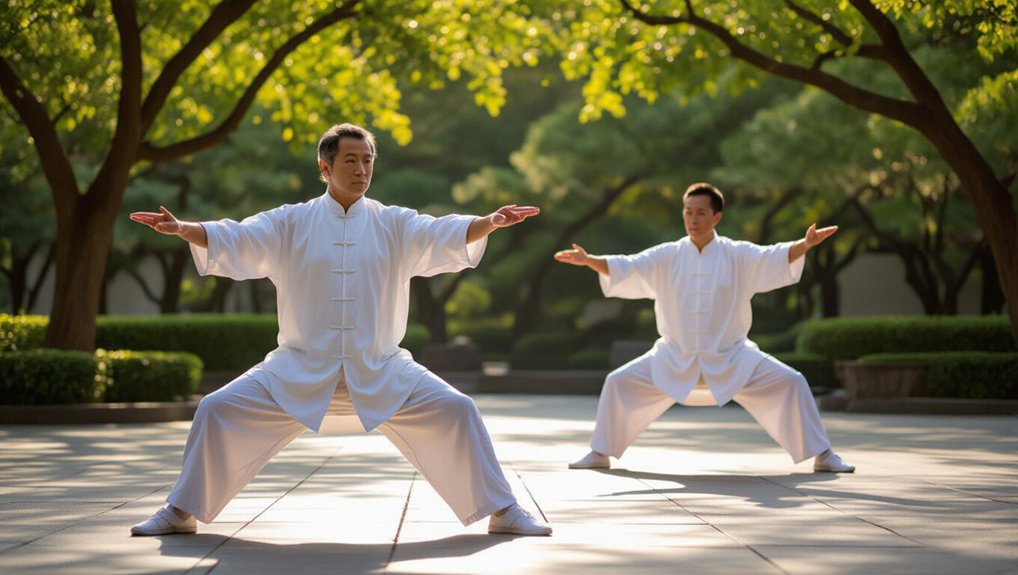
While building your practice routine, you’ll naturally encounter some pitfalls that can slow your progress or lead to frustration.
Don’t rush through movements—tai chi emphasizes slow, controlled motions that build internal energy. You’ll miss the essence if you speed up to match advanced practitioners.
Avoid holding your breath during forms. Breathing should flow naturally with each movement, creating harmony between mind and body. Many beginners tense their shoulders and arms, but tai chi requires relaxation and softness.
Don’t expect perfection immediately. Focus on basic stances and weight shifts before attempting complex sequences. Skipping fundamentals creates bad habits that become harder to correct later.
Finally, don’t practice irregularly. Consistency trumps intensity—fifteen minutes daily beats sporadic hour-long sessions for building muscle memory and internal awareness.
Conclusion
You’ve taken the first step into Tai Chi’s transformative world. These foundational movements and breathing techniques will serve as your building blocks for deeper practice. Don’t rush the process—let each movement flow naturally while maintaining proper alignment. Start with short sessions and gradually build your routine. Remember, consistency matters more than perfection. Trust your body’s wisdom, stay mindful of your breath, and enjoy this gentle journey toward improved balance and well-being.
